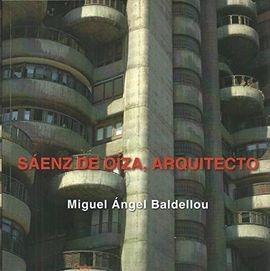Sáenz de Oíza, arquitecto

Francisco Javier Sáenz de Oíza (Cáseda, Navarra, 1918-Madrid, 2000), has been considered unanimously by specialized critics one of the masters of Spanish architecture of the second half of the twentieth century.
Titled in Madrid in 1946, his architecture traversed the main roads that marked that era with unusual brilliance.
In the different stages in which his work can be divided he managed to make several masterpieces. Thus, in a first, covering from 1946 to the end of the 1950s, the key work was the Basilica of Aránzazu in Guipúzcoa, where he reviewed the premises of religious architecture, its relationship with the plastic arts and the modernization of the language in a total work of art. Between 1953 and 1960, its priority occupation was turned into minimal housing, managing to characterize the “social” architecture of the time, with numerous works and projects in Madrid (Homes in the Manzanares, towns of Fuencarral “A”, of Entrevías, neighborhood units of Batán and Loyola).
In the 1960s his work revolved around the design and construction of the Torres Blancas building in Madrid. This work supposed its definitive consecration in the international panorama.
The decade of the 70s was led by the construction of the office tower for the Bank of Bilbao in Madrid, in which he made a memorable synthesis of his previous experiences.
From the 1980s, its architecture was diversified into formal options that accentuated its eclectic profile. In these years he built several notable examples that were accompanied by controversy.
His determined vocation led him to participate, from the beginning of his activity, in numerous competitions in which he triumphed frequently and which allowed him to experiment continuously with his own expressive limits.
His capacity for figurative invention and technical precision formed the basis on which he cemented his best proposals, which gave him the privileged position he occupies in the memory of his numerous followers and disciples.
Madrid, in whose School of Architecture he left a deep mark as a teacher of several generations, owes two of its most representative icons: the buildings of Torres Blancas and the Bank of Bilbao. Even if only for these two pieces, his memory should be remembered by the city permanently.
Out of stock
Out of stock

